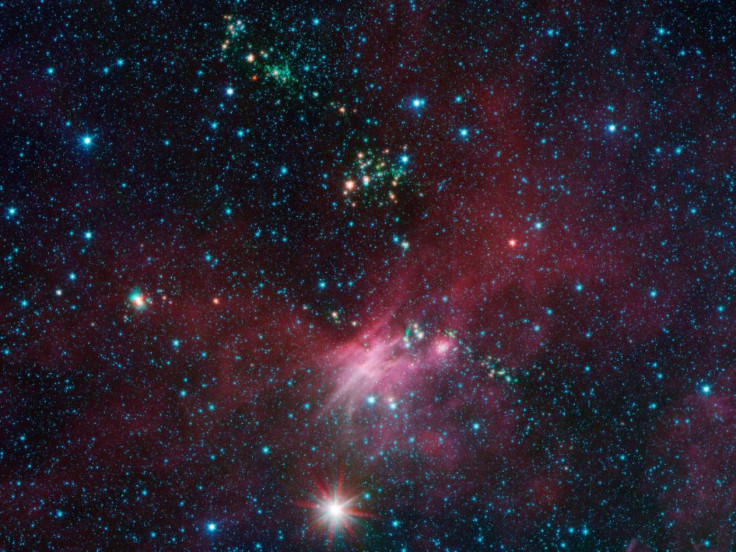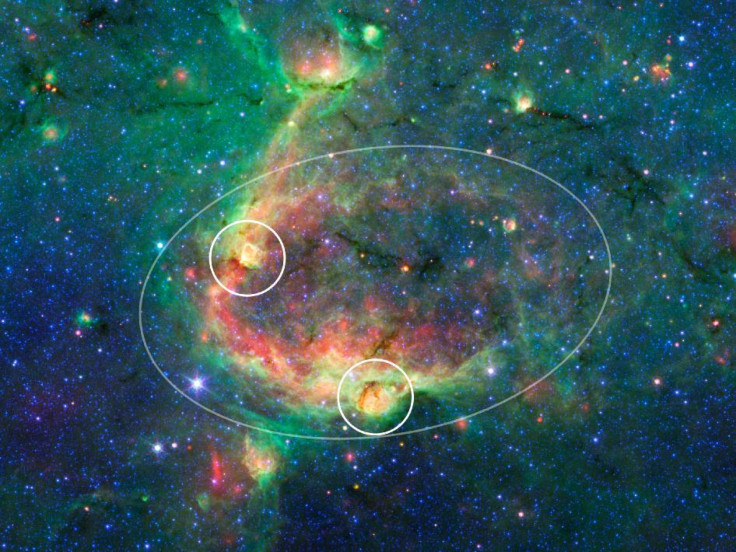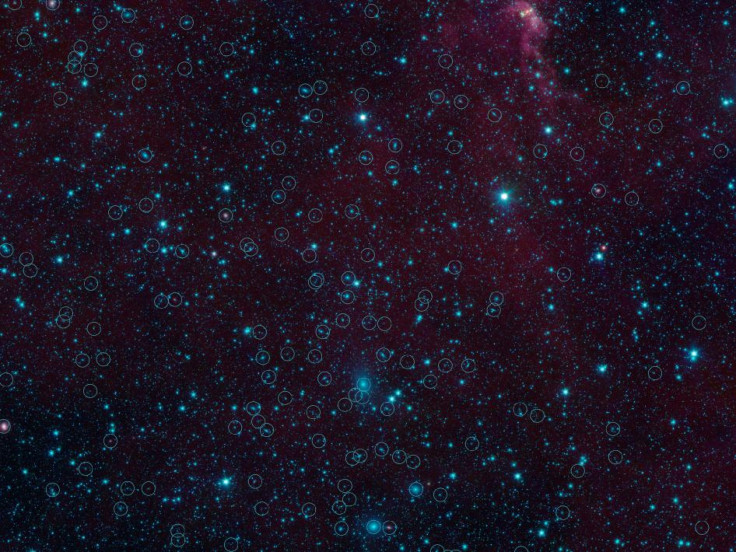New Stars Continue To Emerge Throughout The Milky Way In Latest NASA Images [PHOTOS]
New photos from NASA prove there is plenty of life left in the Milky Way galaxy as dozens of stars can be seen emerging from space debris. The new stars were found in outer parts of the Milky Way that astronomers are just now beginning to map.
The photos were taken by NASA’s Spitzer Space Telescope as part of the Galactic Legacy Infrared Mid-Plane Survey Extraordinaire project, GLIMPSE 360, said the U.S. space agency. The goal of GLIMPSE 360 is to map out our galaxy, and a full map, complete with a 360-view of the galaxy’s plane, will be available later in 2013.

According to NASA, the Earth and our solar system are roughly two-thirds of the way out from the Milky Way’s center. While a lot of the focus by astronomers has been on the galactic core and its dense population of stars and planets, the one-third of the Milky Way that is "behind" our solar system has been less researched. Astronomer Barbara Whitney, from the University of Wisconsin at Madison, called the outer edges of the galaxy “flyover country,” and said, “We are finding all sorts of new star formation in the lesser-known areas at the outer edges of the galaxy.”
Whitney and other astronomers have been able to use Spitzer to detect dozens of new stars, some forming in clusters while other stars emerge in isolation, throughout the galaxy. Around 30 stars have been found near the constellation Canis Major, which contains the bright star Sirius, ejecting various material, says NASA. Based on this development, astronomers believe the stars are relatively early on in their life cycle. Using Spitzer, astronomers have discovered 163 areas containing such star activity.

In addition to discovering many areas of recent star development, astronomers from Wisconsin have also discovered that, as one travels away from the Milky Way’s center to the outer arms of the galaxy, the number of red giants, a star much later in its evolutionary cycle, decreases.
The GLIMPSE 360 project gets plenty of help from amateur astronomers and researchers as well as NASA's Wide-field Infrared Survey Explorer, or WISE. The data collected by Spitzer is available to the public, which allows for the detection of star growth via crowdsourcing. The usage of WISE lets astronomers survey the galaxy twice in order to create infrared images quicker, although with less detail, than Spitzer.

The new images and developments from the GLIMPSE 360 project were presented at the 222nd meeting of the American Astronomical Society.
© Copyright IBTimes 2024. All rights reserved.












